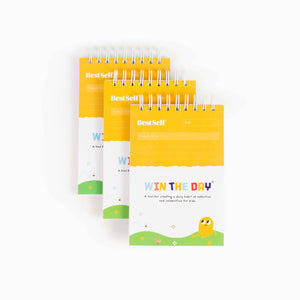Teaching kids to practice gratitude can set them on a path to a happier, more positive life. Gratitude isn't just about saying "thank you." It helps children understand and appreciate the good things they have, which can lead to stronger relationships and a greater sense of well-being. When kids are grateful, they are more likely to be kind, empathetic, and resilient.
Encouraging kids to notice and appreciate the small things in life can be fun and rewarding. Parents and guardians can find ways to make gratitude a natural part of their everyday routine. By introducing creative activities and leading by example, families can cultivate a culture of thankfulness at home. Teaching gratitude not only benefits children but also helps create a warm and supportive family environment where everyone can thrive.
Understanding the Importance of Gratitude for Kids
Gratitude is about appreciating the things we have and the kindness others show us. For kids, learning about gratitude can bring big benefits. It helps them focus on the positive side of life and feel more thankful for what they have, like family, friends, and fun experiences. Understanding gratitude early can shape their outlook as they grow.
Practicing gratitude can also improve emotional well-being and relationships. When kids express gratitude, they often feel happier and more satisfied. Feeling thankful can even help children connect better with others. They can understand how their actions affect friends and family, leading to stronger bonds. Saying thank you can open doors to kindness and friendship, making social interactions more positive.
Additionally, knowing how to be grateful helps kids build a positive mindset and resilience. When challenges come, gratitude helps them see the silver lining. It teaches them to focus on solutions, rather than dwelling on problems. This approach can make children more adaptable and ready to face ups and downs. By cultivating a grateful attitude, they learn to appreciate life's journey, fostering a spirit of hope and perseverance.
Creative Activities to Cultivate Gratitude
Engaging kids in creative activities can make practicing gratitude a fun experience. Here are some exercises that can spark thankfulness in children:
-
Gratitude Jar: Have kids write things they are grateful for on small notes and drop them in a jar. This can be a fun weekly or monthly activity.
-
Thank You Tree: Create a tree on a poster board and add leaves with messages of gratitude. This visual reminder can brighten up any room.
-
Story Sharing: Encourage kids to share stories of kindness they've experienced or witnessed. This helps them recognize good deeds and builds a habit of reflection.
Games and crafts can also encourage gratitude. Suggest children make gratitude cards for friends or family. These handmade tokens are special ways to express thanks. You can also engage them in a game of "Gratitude Bingo," where each square represents something they're thankful for. These activities are enjoyable and reinforce the value of gratitude.
Lastly, introducing gratitude journals can help kids regularly reflect on the positives in their life. Suggest they write down three good things daily. This habit sets a routine of appreciation and shows kids how much they have to value. By identifying and acknowledging the good, children learn to cultivate a heart full of gratitude.
Incorporating Gratitude Into Daily Routines
Making gratitude a regular practice in daily life can be quite simple. Start by building small habits into everyday family interactions. During meal times, take turns sharing one thing each family member is grateful for. This can enhance family bonds and set a culture of thankfulness at home. Bedtime routines can also include a few minutes for kids to reflect on their day and express what they appreciated.
Parents can set an example by showing gratitude in everyday situations, like thanking a grocery store cashier or appreciating a sunny day. Kids learn a lot by watching the adults around them. When they see gratitude in action, they naturally begin to imitate it. Being a role model of thankfulness makes a big difference.
Simple habits like saying thank you or noticing acts of kindness are easy ways to practice gratitude. Encourage kids to keep a "thankful log" where they jot down daily thank-you's or keep track of kind deeds. Regularly mentioning high points of the day can also remind kids that gratitude isn't just for special occasions. It's about recognizing everyday blessings.
Overcoming Challenges in Practicing Gratitude
Practicing gratitude may come with challenges for children, but understanding these challenges is the first step to addressing them. Kids may sometimes find it hard to focus on the positive, especially during tough times. Recognizing these feelings is normal and part of growing up. It's important to gently guide them when they struggle to see the silver lining.
To help children appreciate gratitude's value, explain how it improves overall happiness and connects people. Share examples of how gratitude can make a tough day better or show children how it helps in making friends. Discussing the benefits rather than forcing the practice can foster a genuine interest.
Encouraging consistency in practicing gratitude is crucial. Try turning it into a fun game or challenge. Perhaps see who can share the most thankful thoughts in a week. Praise efforts, no matter how small, and remind kids that it's okay if gratitude doesn't come easily every time. Over time, these practices turn into habits, giving children a valuable tool for life.
Conclusion:
Gratitude can transform how we see the world, filling our lives with joy and kindness. Encouraging kids to practice gratitude equips them with a lifelong skill that will help them face any challenge. It builds resilience, strengthens relationships, and fosters a positive attitude. Through creative activities and by making gratitude part of daily life, kids can learn to see the blessings all around them. For parents and guardians, the journey of teaching gratitude can be as rewarding as the outcome.
To give your family a head start on building gratitude and other personal growth habits, explore the tools at BestSelf Co. designed to help incorporate positive practices into busy lives, our kid journal can be your partner in creating a brighter, more thankful future for you and your children.




































